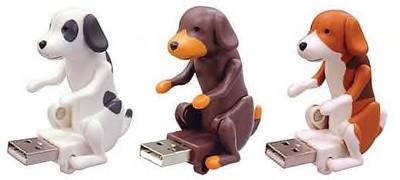
Pets are more stalwart photographic subjects than kids, or grownups for that matter. They don't groan "Oh, no, not again!" when you raise the camera to your eye. They don't make funny faces or deliberately stick their tongues out to thwart your photographic endeavors. (Dogs pant, of course.) While they can be just as active as kids — and as much of a photographic challenge when they speed around — they also actually like to take naps. Nap time is a good time to get pet pictures.
Otherwise, though, many of the same photographic techniques that apply to taking photos of kids work with pets, too. Be sure to get down to their eye level. Unless you have a pet llama or a horse, pets are even lower to the ground than kids.
With cats and dogs, you can get easier eye-level pictures by snapping them when they perch on a window sill or, if allowed, a favorite chair.
Your pet no doubt has some distinctive behavior, often comical, that make for prime picture-taking opportunities. Perhaps your old family dog likes to study ants, nose to the ground, head cocked to one side for a one-eyed microscopic view. (This is a perfect opportunity for a ground-level shot.) Maybe your new cat likes to lie flat on her back on your bedroom carpet with her legs straight up in the air, staring at the world upside down. Photographing interesting and amusing pet behaviors is a kind of substitute for the fact that animals don't have a child's range of facial expression, at least to human eyes. Pet pictures may otherwise have a certain sameness to them. Their context — environments, behaviors, settings, and so on — becomes especially important.
For the same reason, you should show pets interacting with family members. They are, after all, a part of the family. These pictures can, of course, be candid: playing fetch, chasing a string, getting a tummy rub. Or they can be more posed — a pet in your arms or on your lap.
Making eye contact with pets is important. Call out to them when you're ready to take the shot. With pets, expression is almost entirely in the eyes. Indeed, a true dog or cat person will tell you that the eyes are the window to a pet's soul.
Unfortunately, that soul may seem to come from the dark side when flash turns those eyes red — or green, as often happens with pets. Red-eye and green-eye are a special problem with pets. With cats in particular, the large area of their eyes relative to their faces compounds the problem. You can use your camera's red-eye reduction system to lessen the effect. But depending on your particular system, there's a long delay between when you press the shutter button and when the picture is actually taken. This delay can cause you to lose the moment you wanted to capture. And pets aren't in the habit of waiting around. Dog news
Wednesday, February 27, 2008
Photographing Your Pets
Labels:lilyruths dogcents,
" pets,
add a link,
adoption of dogs,
dog news,
dogcents,
fund raiser,
Pictures of dogs
Subscribe to:
Post Comments (Atom)


 My StumbleUponPage
My StumbleUponPage




















1 comment:
And I think dogs are too adorable so they really are good in posing in front of the camera.
Post a Comment